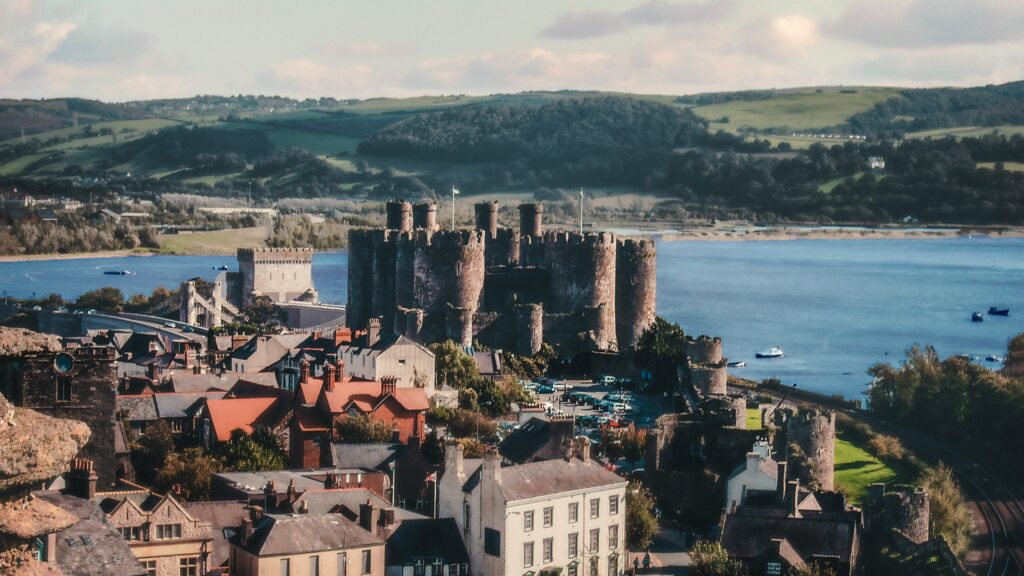Trevor Fishlock reports on the opening of a mining memorial at the old Universal Colliery where disaster struck a century ago today
Here’s a good example of people in a community in Wales getting together to make a reality of an idea. They’ve created something for themselves, for their children and for any visitor with an interest in history. Today they will gather for the opening of the Welsh National Mining Memorial commemorating more than 6,000 people killed in the coal era in Wales from the 1840s to the 1970s.
Its inauguration will be a fitting aspect of the centenary of the Senghenyddd disaster of 1913. The name of Senghenydd has resonated in the memory of Wales. At ten past eight this morning a colliery hooter wailed in poignant tribute. It was at this moment 100 years ago that gas exploded with a roar deep in the pit and killed 439 men and boys, the worst disaster in British mining history.
The shudder of the earth shook plates from dressers and dislodged clocks from the walls. The rumble called the women from their homes. More than 200 of them would soon find themselves widowed. More than 540 children were made fatherless. The miners killed by blast and fire were one eighth of the local men.
The national mining memorial is on the site of the old Universal Colliery at Senghennydd. It takes the form of a garden designed by Stephanie Wilkins. Its stone walling has brick quoins and flagged pavement to mimic the terraced housing of the valleys; and in the traditional way the mortar is mixed with coal to make it harden: it’s called pozzolana.
The memorial garden is arranged in two elements. One part is the Senghenydd monument. The wall here has tiles, produced in community and school workshops, bearing the names, ages and addresses of the men and boys lost in the two Universal Colliery Senghenydd disasters. Twelve years before the horror of 1913 an explosion killed 81 night shift miners; and only one man got out alive.
In the other part of the garden is a path whose stones list scores of disasters. In forty years from 1874 to 1914 more than a third of British colliery deaths occurred in south Wales. In 12 disasters there was a death toll of more than 100. Catastrophes made headlines but there was also a steady tick tock of death in twos and threes.
There was no doubt that news photography brought home to everyone the scale and reality of the disaster. A skilled photographer, William Benson, hurried to Senghenydd and took pictures of remarkable clarity and impact. A poignant and painful portrayal of a community’s grief and loss, they are unforgettable. Coffins came up from Cardiff. Wives and mothers identified bodies by a tobacco box or by a patch they themselves had sewn on a boy’s clothing. Only 18 men emerged alive. The hillsides overlooking the town were thick with spectators.
The disaster struck every street in the town. In one street alone 45 men were killed. In the usual way of mining communities many men in a house were miners: fathers, sons, brothers and lodgers. It made sense if they all worked the same shift. It meant that there would be only one upheaval in a day, the men coming home in their dirty clothes for a bath and meal. That was why so many homes lost several men.
Gill Jones, who was born in Senghhenydd, is part of the Aber Valley Heritage Group, which has developed the memorial idea. She has researched the disaster fund which was run entirely by male trustees. “They paid benefits to women provided they remained chaste,” she said. “How dare they? That still makes me angry.”
Senghenydd, ten miles from Cardiff, between Pontypridd and Caerphilly, mushroomed when the pit opened in 1896. The colliery closed in 1928. A school occupies part of the old colliery site and the children learn the story. The people have built up their small museum with its disaster artefacts and memorabilia. It is one of the fascinating little museums of Wales. The people have an impressive interest in their story. Senghenydd remembers.






A day full of meaning, in particular for the people who lost relatives in these and other disasters but also f because the tragic aspect of the mining industry touches all of us who live with the legacy of coal. It is built into the fabric of the society that we live in. It is especially good that today’s young people now understand something of the suffering of their grandparents and great-grandparents and will be able to pass on that learning to succeeding generations. Many congratulations to all those who paid a part in bringing this challenging but hugely worthwhile project to a successful conclusion.
Why no reference to the conduct of the mine owners. A glaring omission.